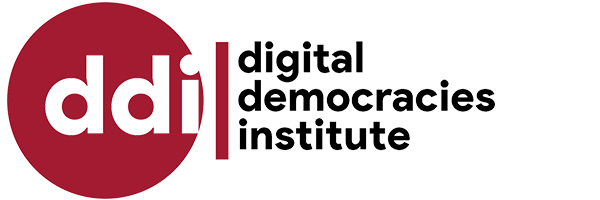Cierra Robson’s presentation to the Institute was incredibly impressive. Hearing about the sheer scope of work that the researchers at the Ida B. Wells Lab have managed to undertake in the short time since their inception was inspiring (and daunting!) and of course, while this short post will not do justice to the material covered, it hopefully gives a flavour of what Cierra described.

Beginning with a summary of The Parable of the Sower, Robson used Octavia Butler’s provocative novel to underline how change is a practice, applicable to all areas of our lives, and one of the driving factors of the Lab, where Cierra is the Associate Director. From Butler: “All that you touch, you change. All that you change, changes you. The only lasting truth is change. God is change.”
The directive of the Lab is to advance race critical data study, aiming to shed light on race-based data and situating it within its social, historical, and political context. Covid-19 presented a great opportunity to research these very things, and they were able to find and support 40 researchers in the summer of 2020. When considering what data to use, it was imperative to have a policy that reflected their values, and it really is worth checking out their policy, based on principles from Data for Black Lives, which can be seen on their website here. Key to the project was having integrity and accountability for the data.
All their work is publicly available on their website here, and is jointly owned by the community partners that they worked with. We would encourage you to visit the projects on the website to fully understand the depth and breadth of the work achieved. We have not gone into detail here because the work speaks for itself. The projects were sourced by Ruha Benjamin (Director of the Lab), reaching out to her networks to find out what would be useful to employ research to discover, in her local communities. Cierra offered these 8 methodological strategies that were hugely useful when imagining working with data in community-based, and other, projects:
- Community engagement > needs to engage with the community! Every number doesn’t speak for itself – it has a context. All research that is done in conjunction with community partners, is for them and this should be forefront in the aims of the work.
- Centre narratives in context > the work should be culturally specific and relevant.
- Studying up > investigating bias, and reorienting the field of algorithmic fairness around issues of power. This was key to understanding how power manifests, how is it experienced.
- Contextualized data > This can be social, political, economic, or even a historical context and ensuring that what is understood from the data is relevant to that context.
- Look for the absences in data > asking the opposite, for example looking not what the data does show but what it doesn’t. Further, asking why there are absences – did someone deliberately not ask a quesiton? This is key to considering what do we not see when we look at a set of data as well as what we do.
- Investigative journalism > researchers to think like investigative journalists rather than researchers; to do more digging, find out what the ‘real’ story is.
- Accessibility and resources sharing > transparency – our duty is to inform and protect, so ensuring that research is intelligible to the community that it came from is crucial.
- Responsible and innovative citational practices > Cierra referred to Arundhati Roy’s article ‘The pandemic is a portal.’ Encouraging researchers to think of alternative methods of engaging with narratives.
Cierra ended with a return to the Butler that she started with, saying that “that change is necessary, it is also available, and is a practice through which we can exercise our own change practices each day.”
 The questions that followed demonstrated how impactful Cierra’s presentation was. By employing more considered research practices into our own work at the Digital Democracies Institute, and working closely with community partners, we hope to be able to emanate the wonderful work achieved by Cierra, and all at the Ida B. Wells Lab.
The questions that followed demonstrated how impactful Cierra’s presentation was. By employing more considered research practices into our own work at the Digital Democracies Institute, and working closely with community partners, we hope to be able to emanate the wonderful work achieved by Cierra, and all at the Ida B. Wells Lab.

